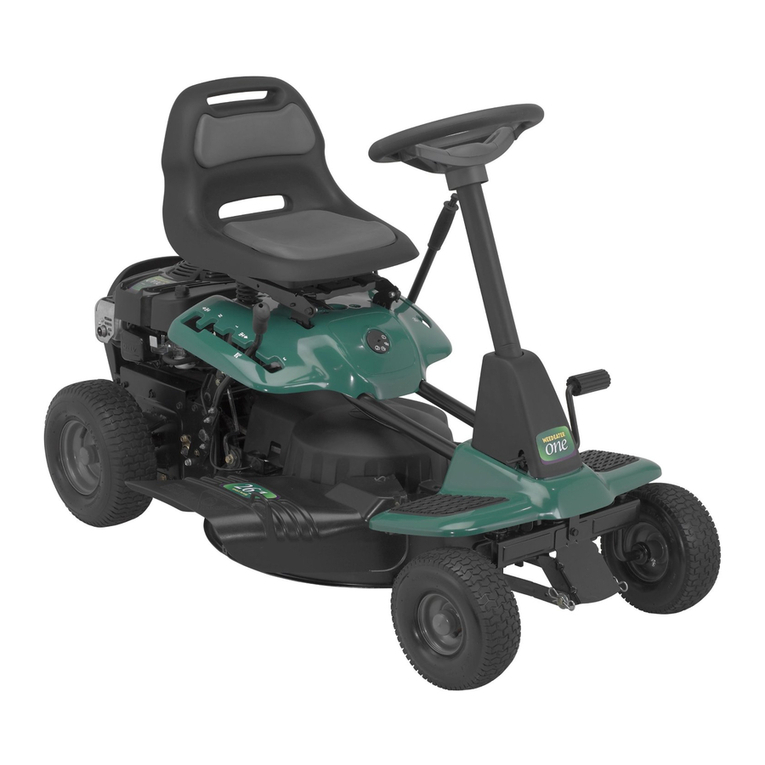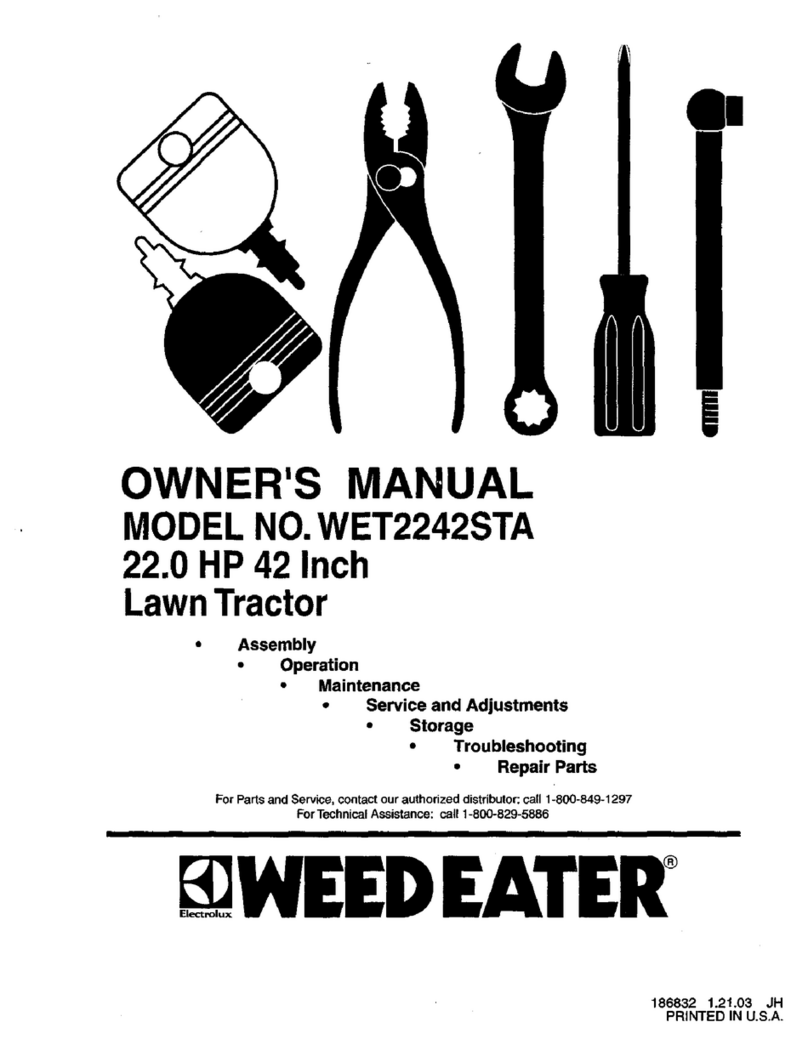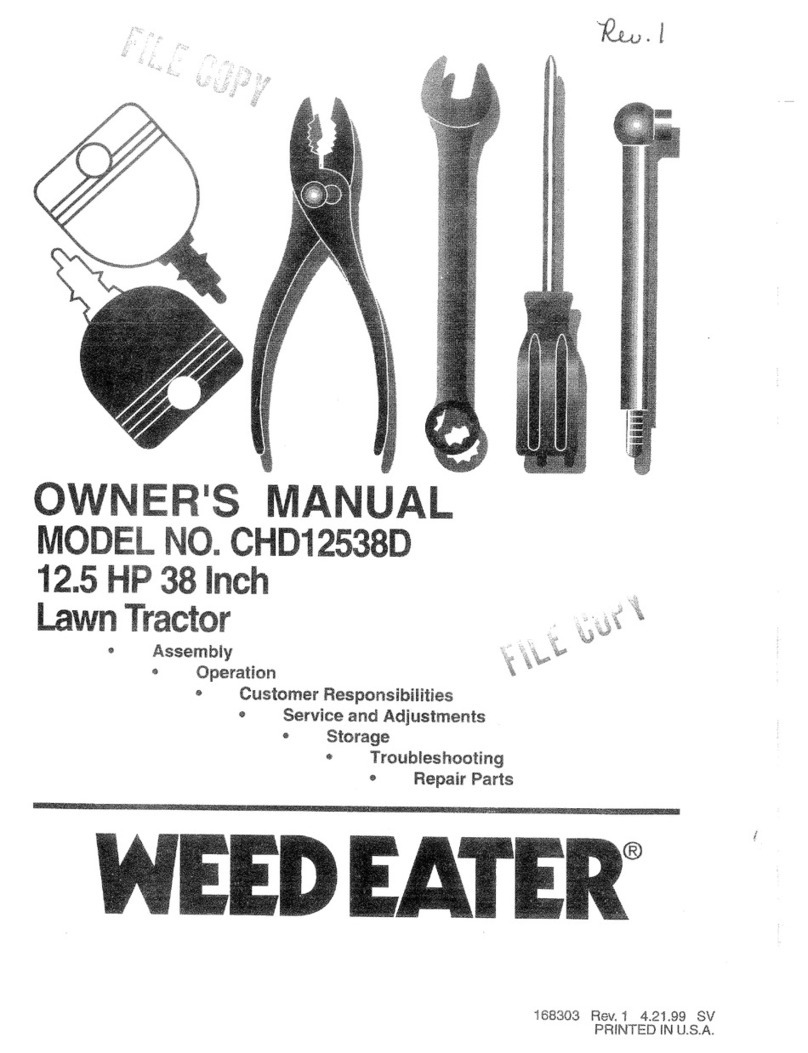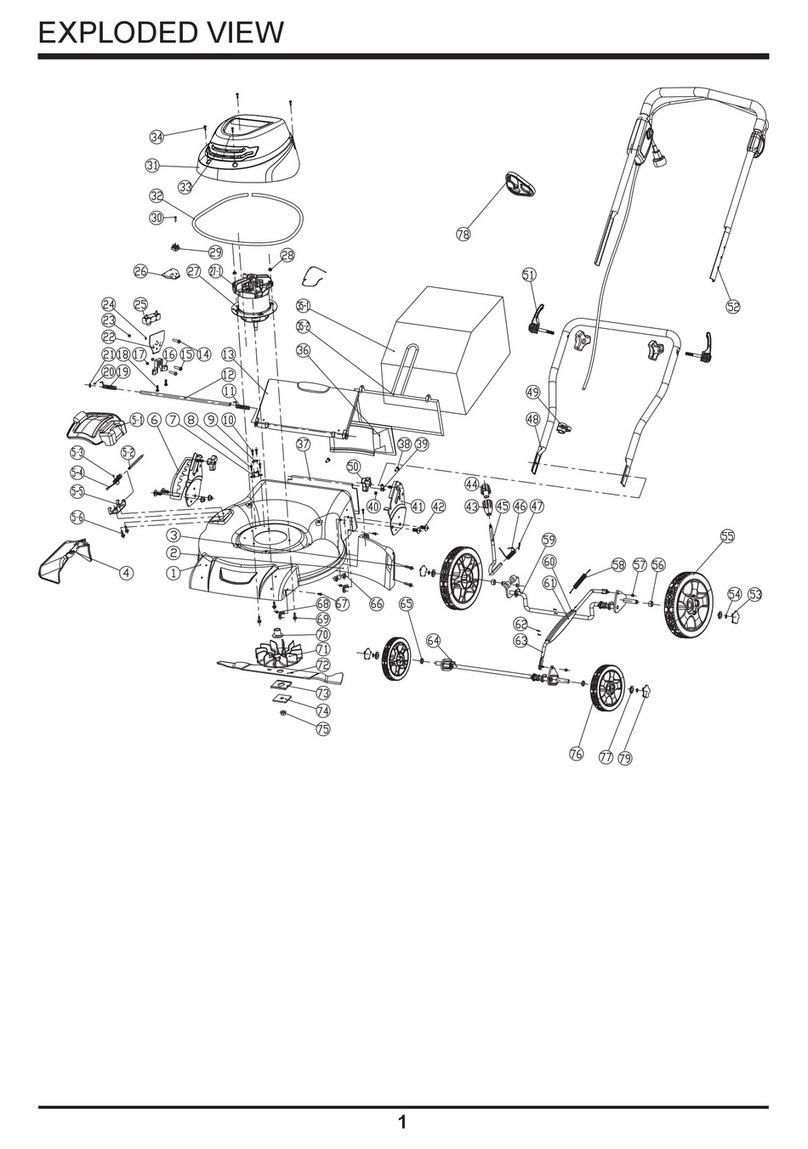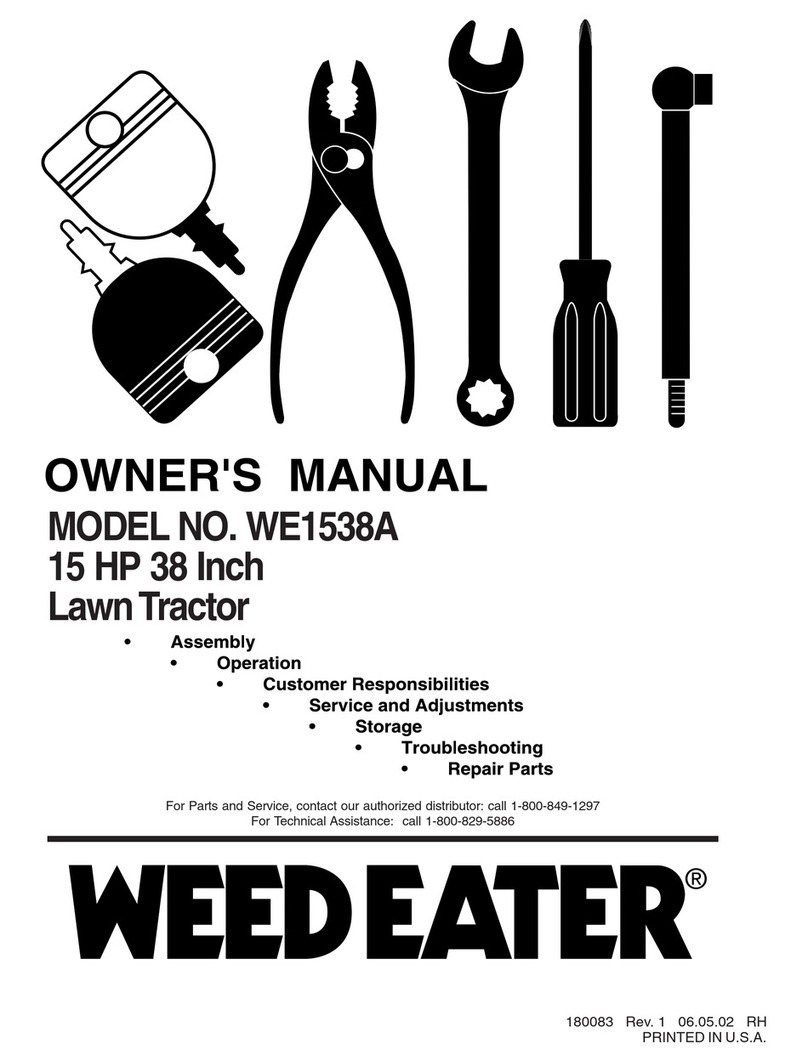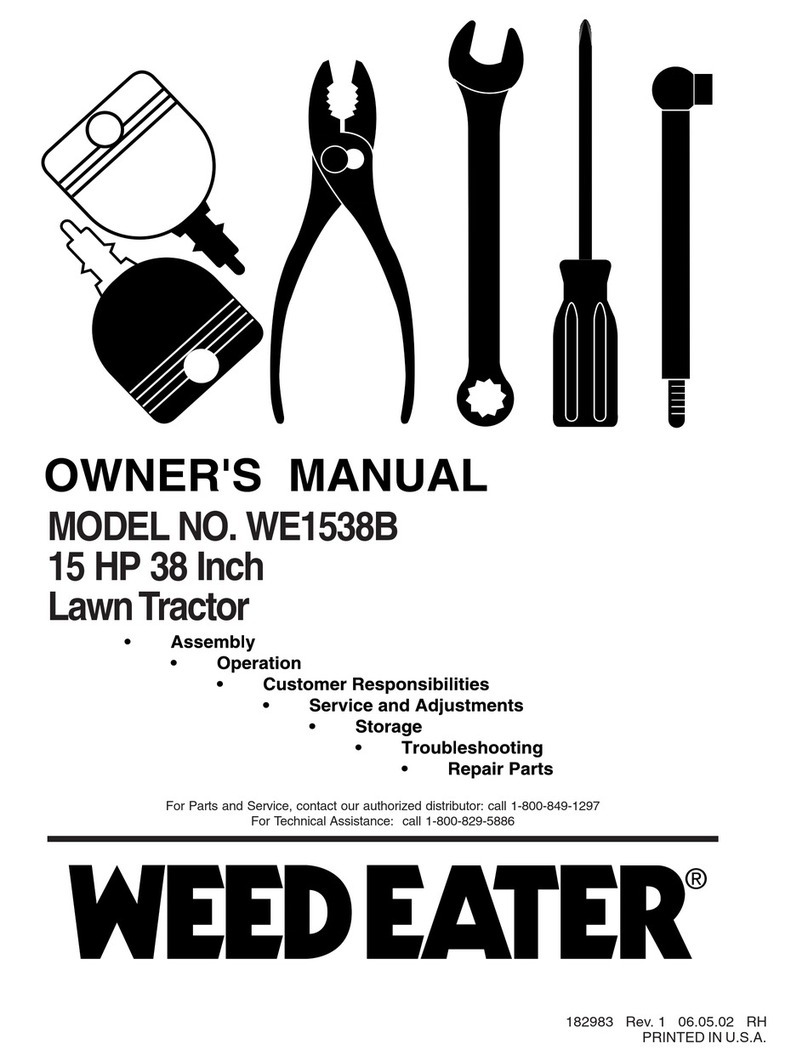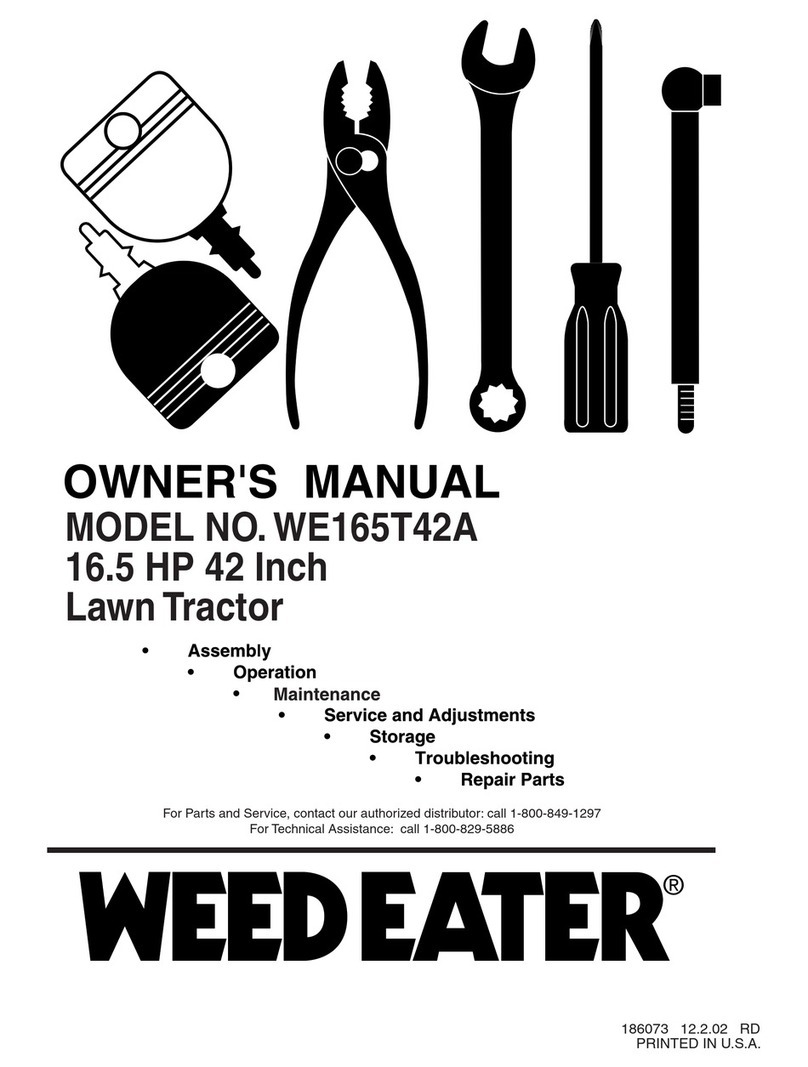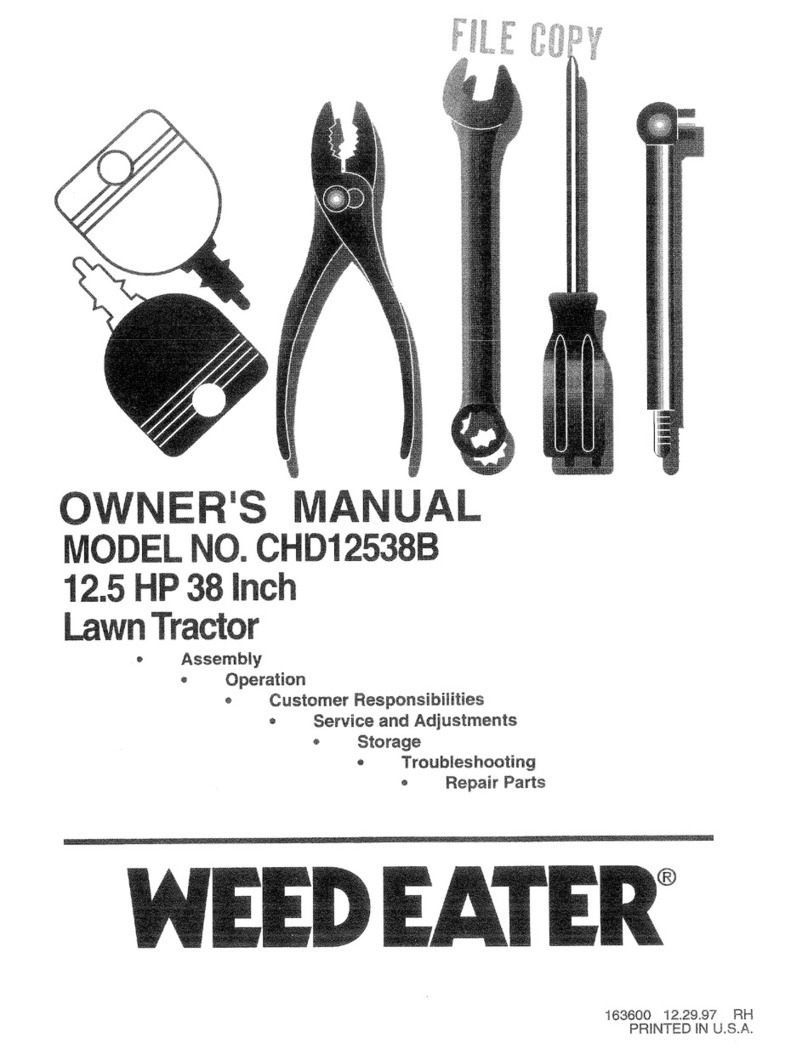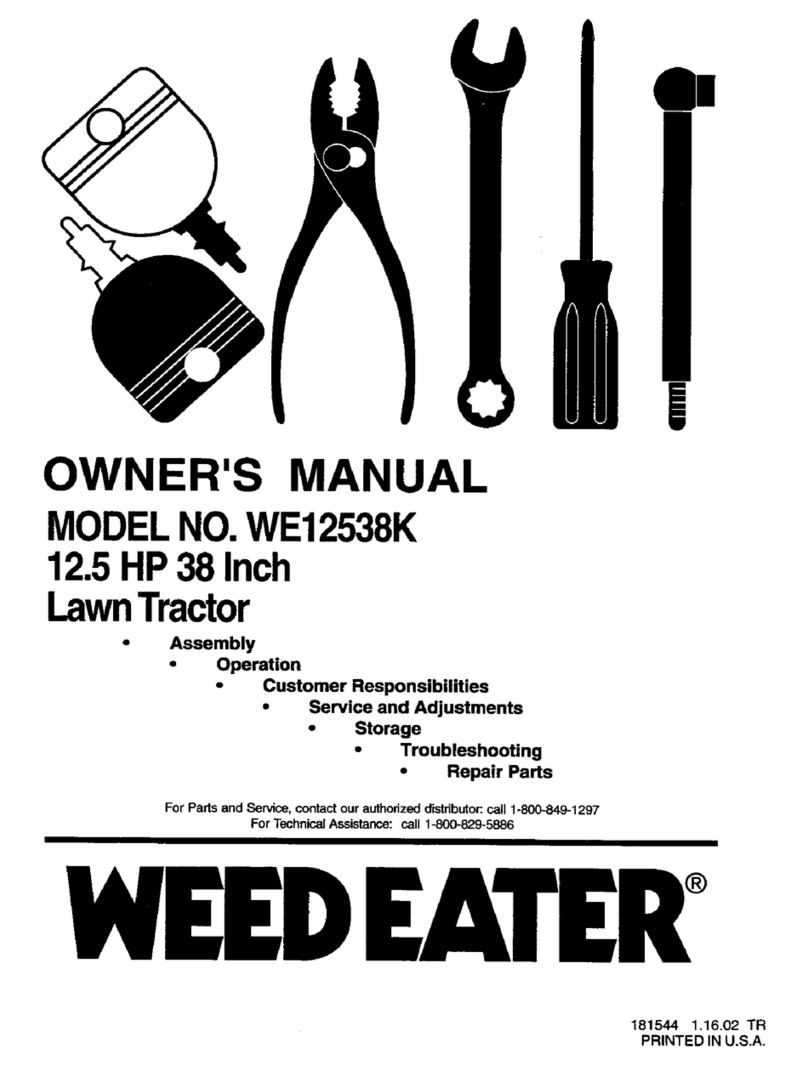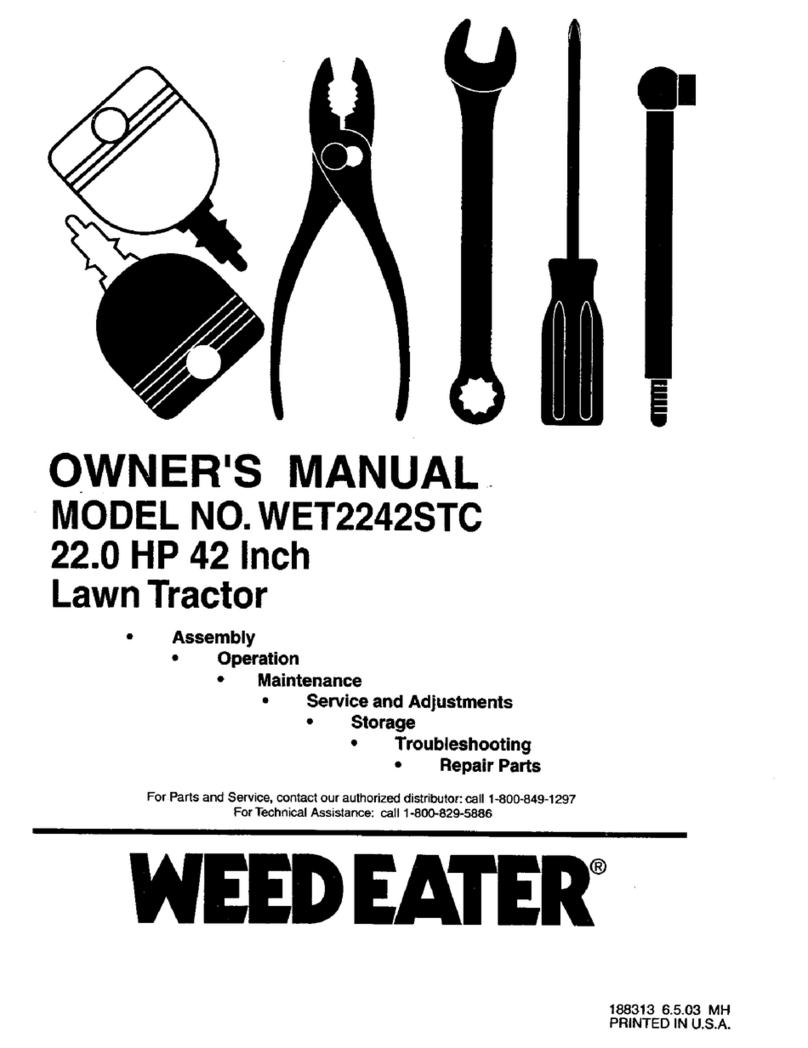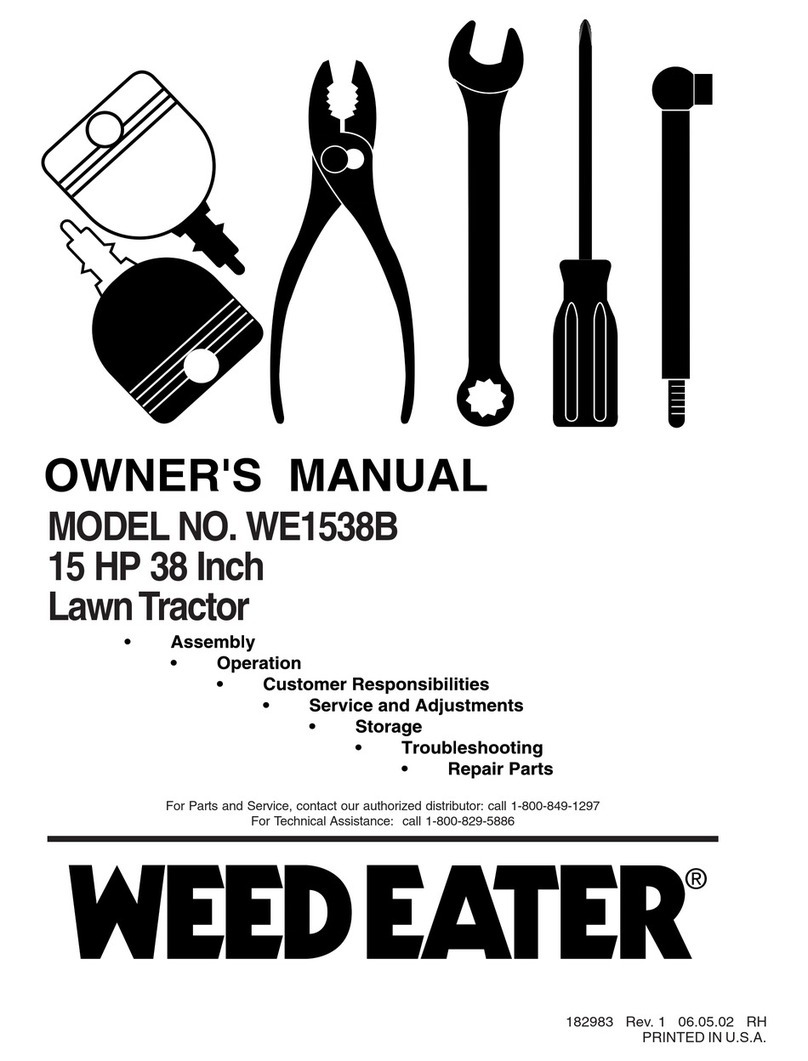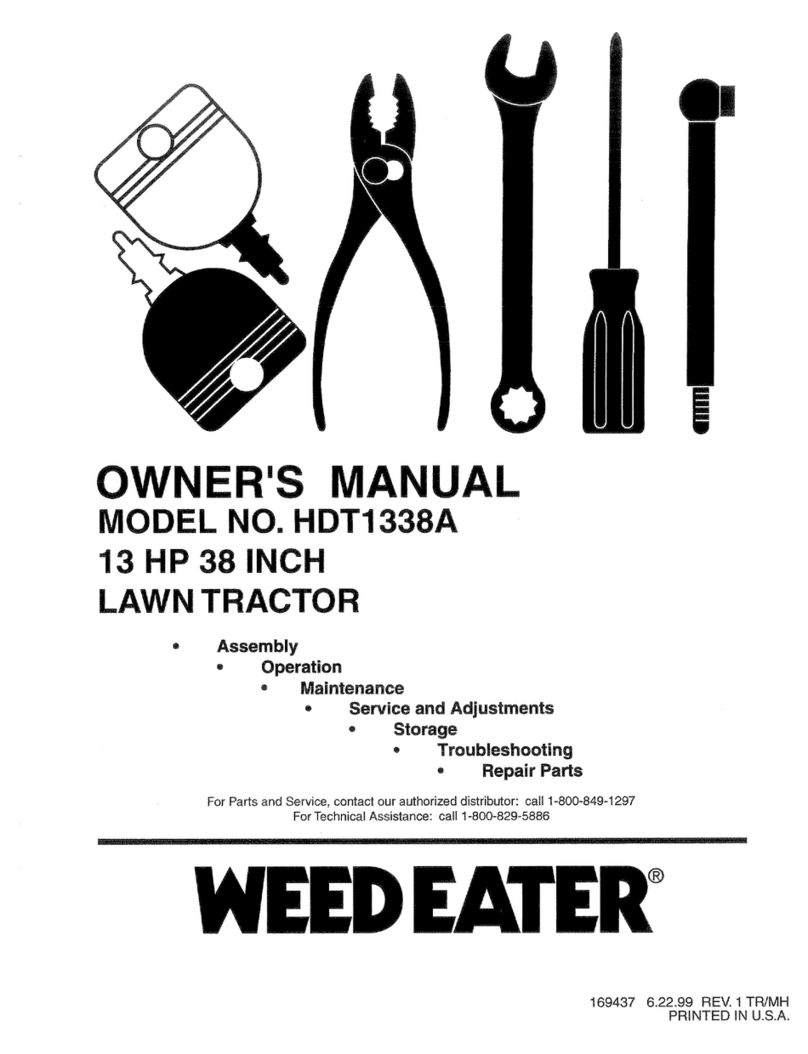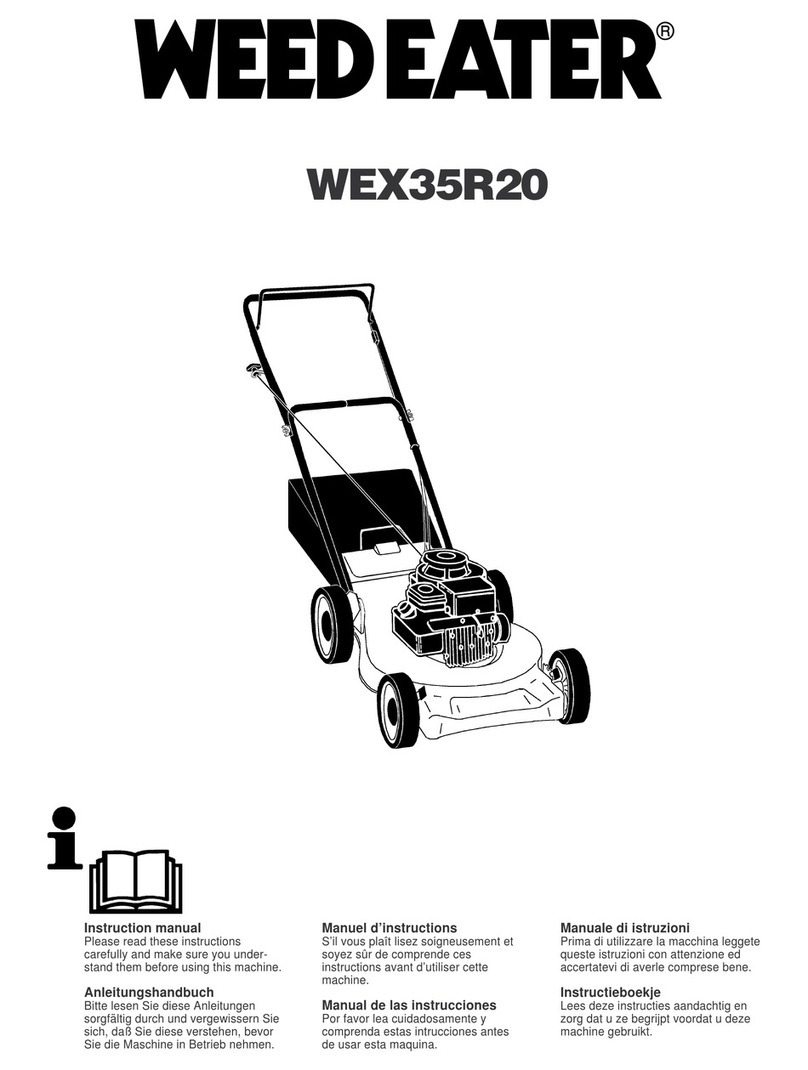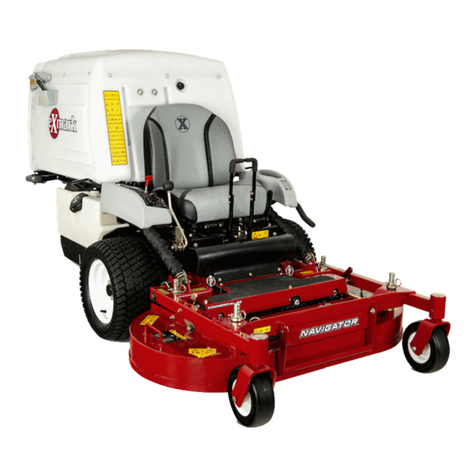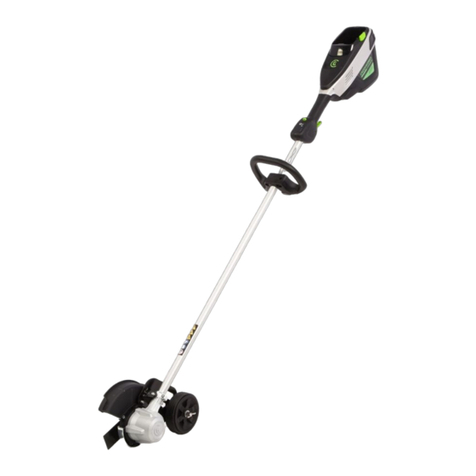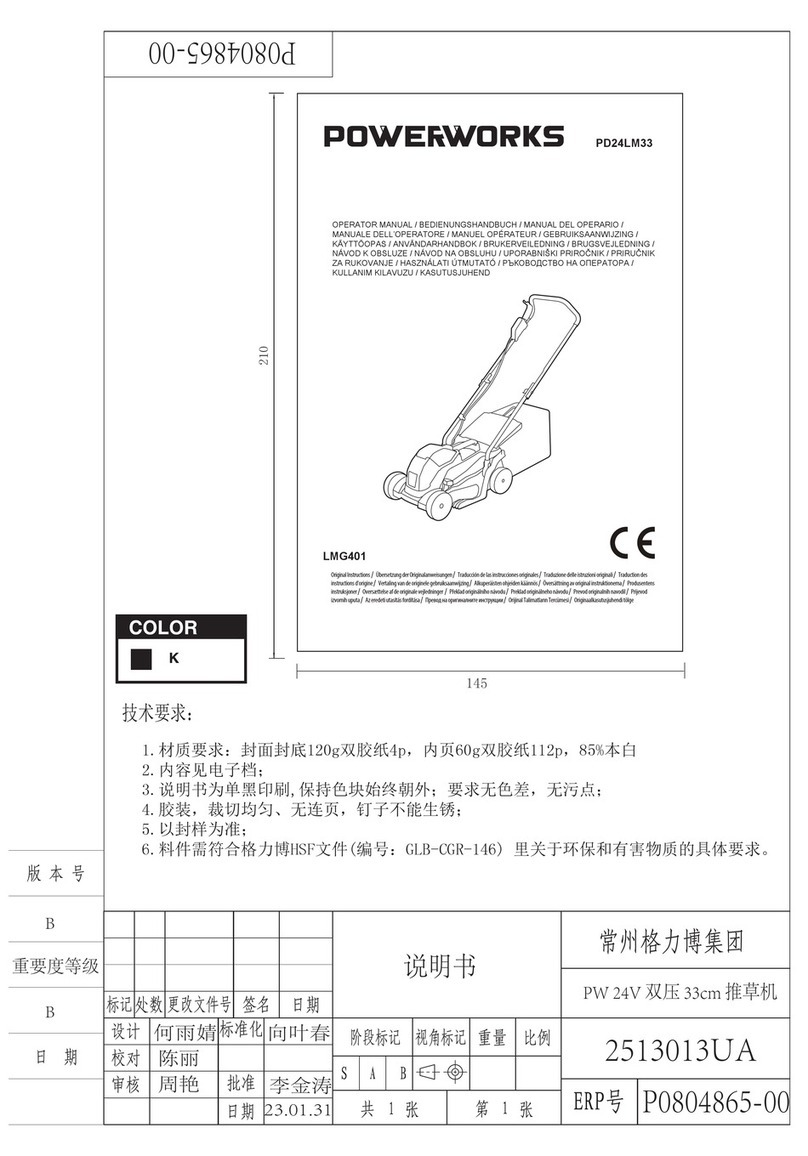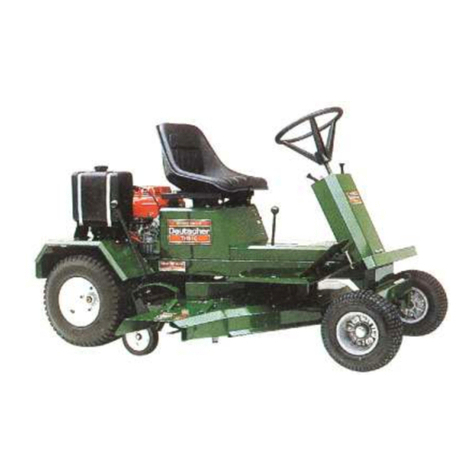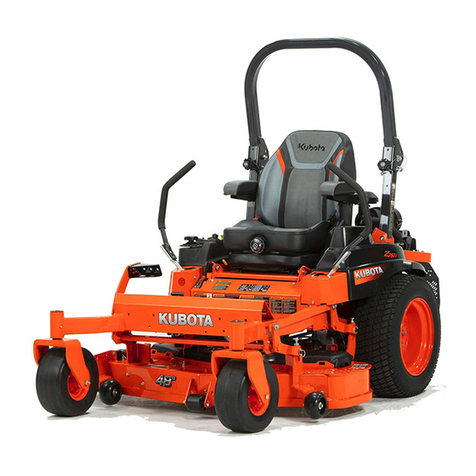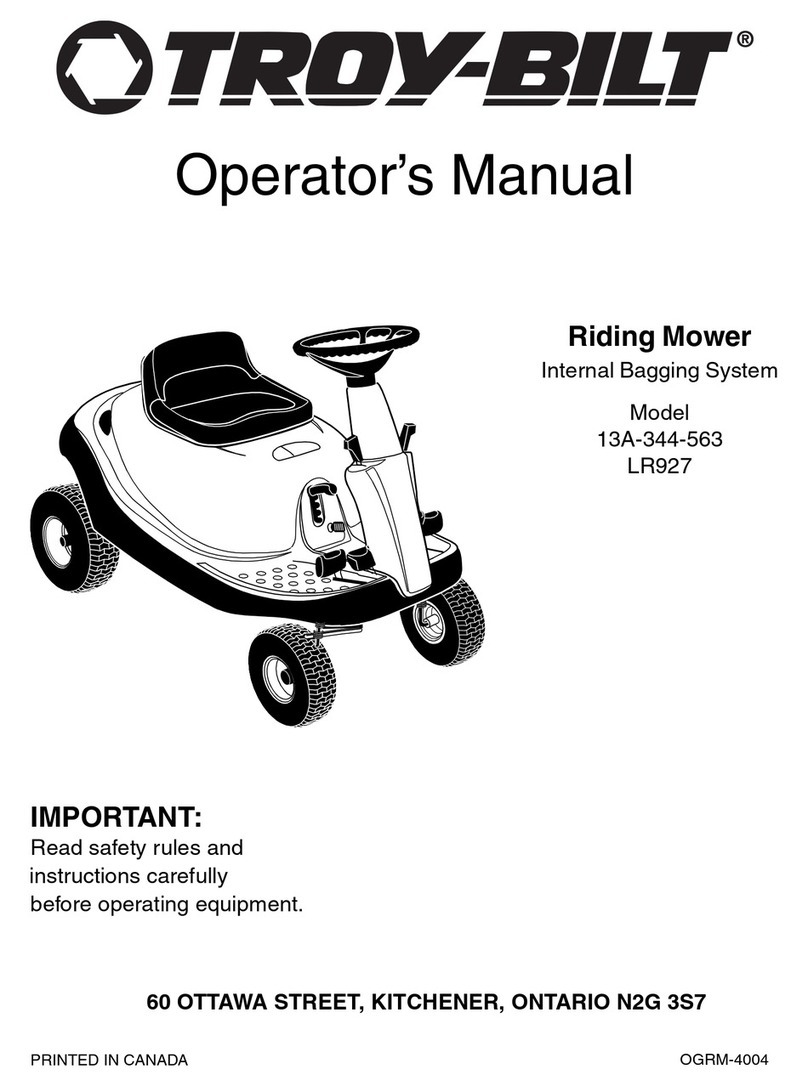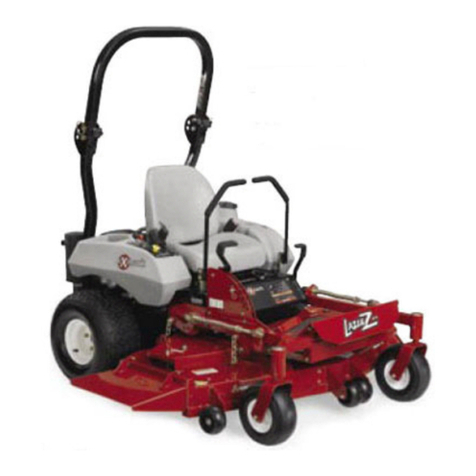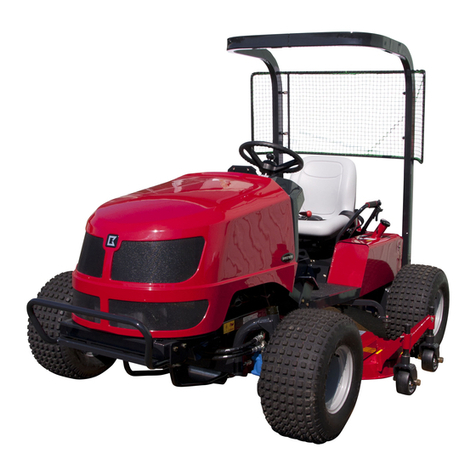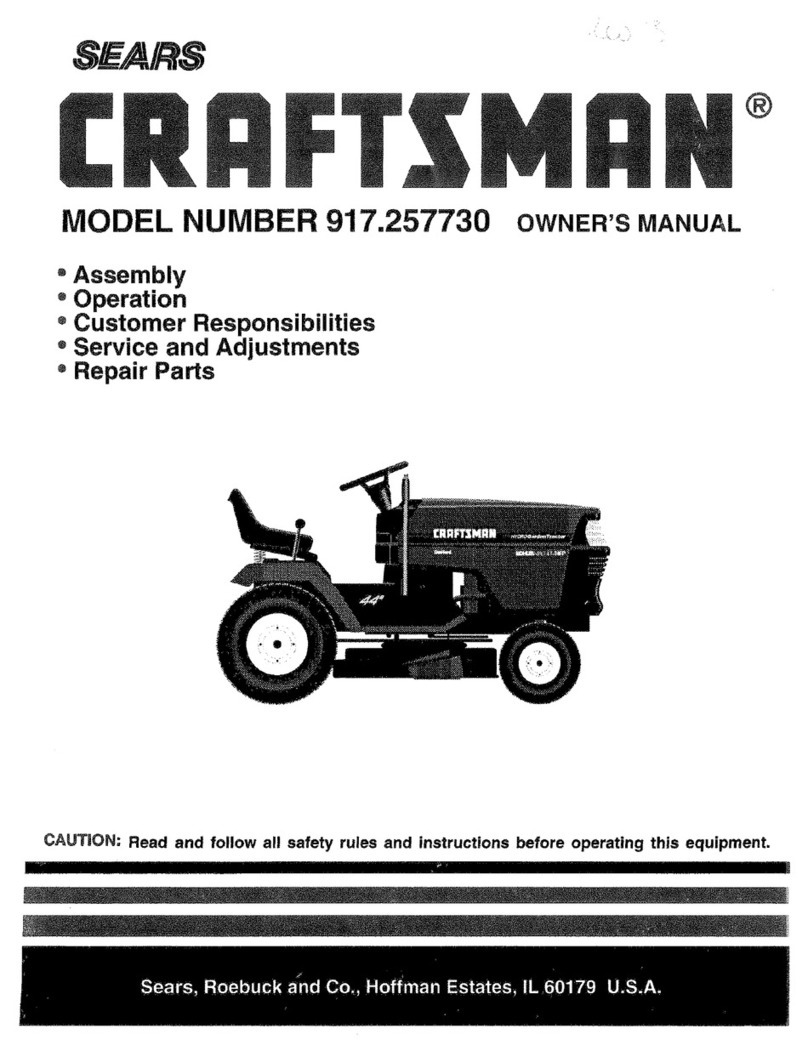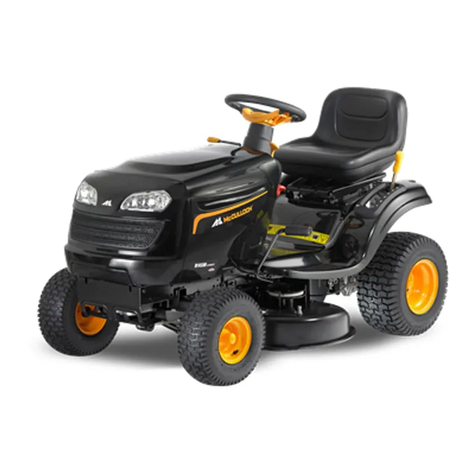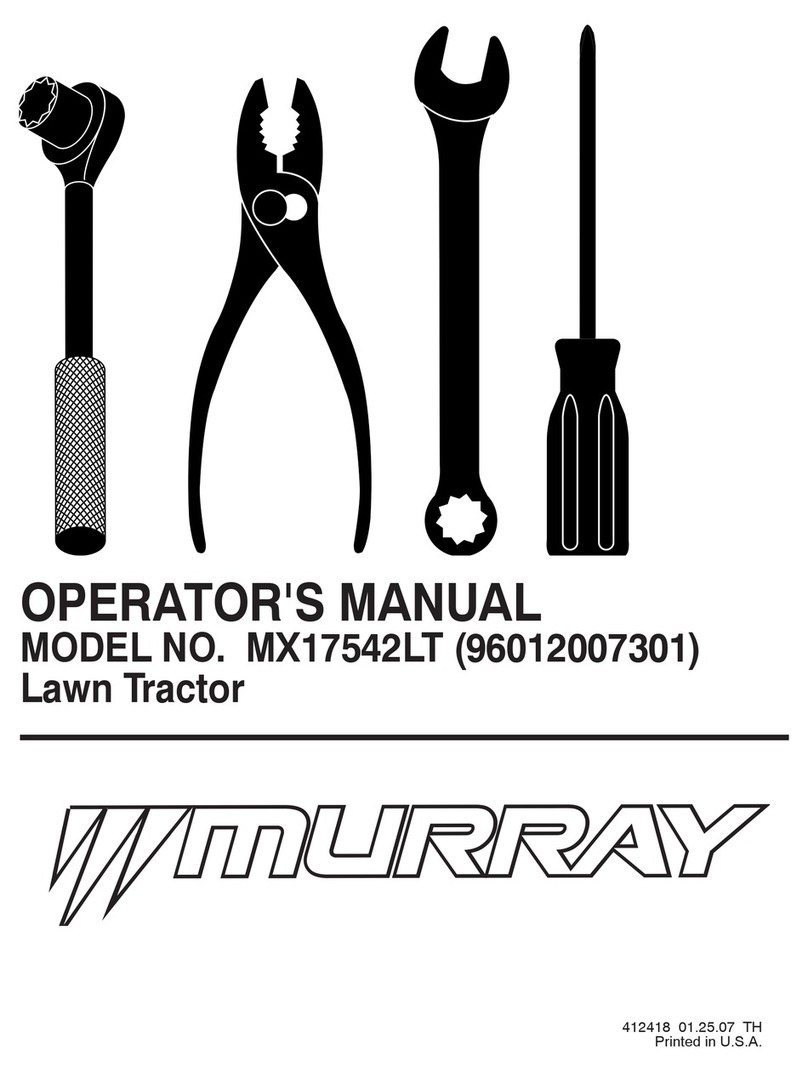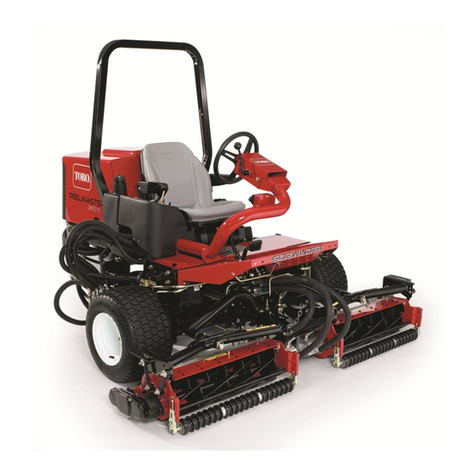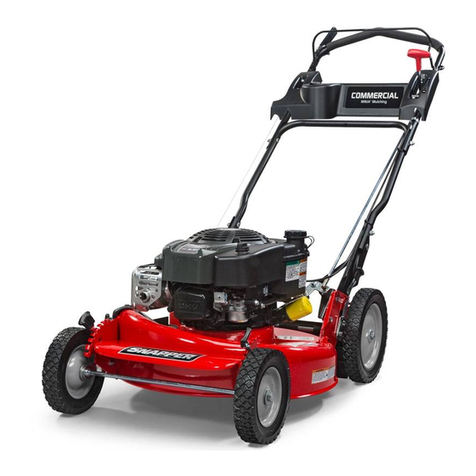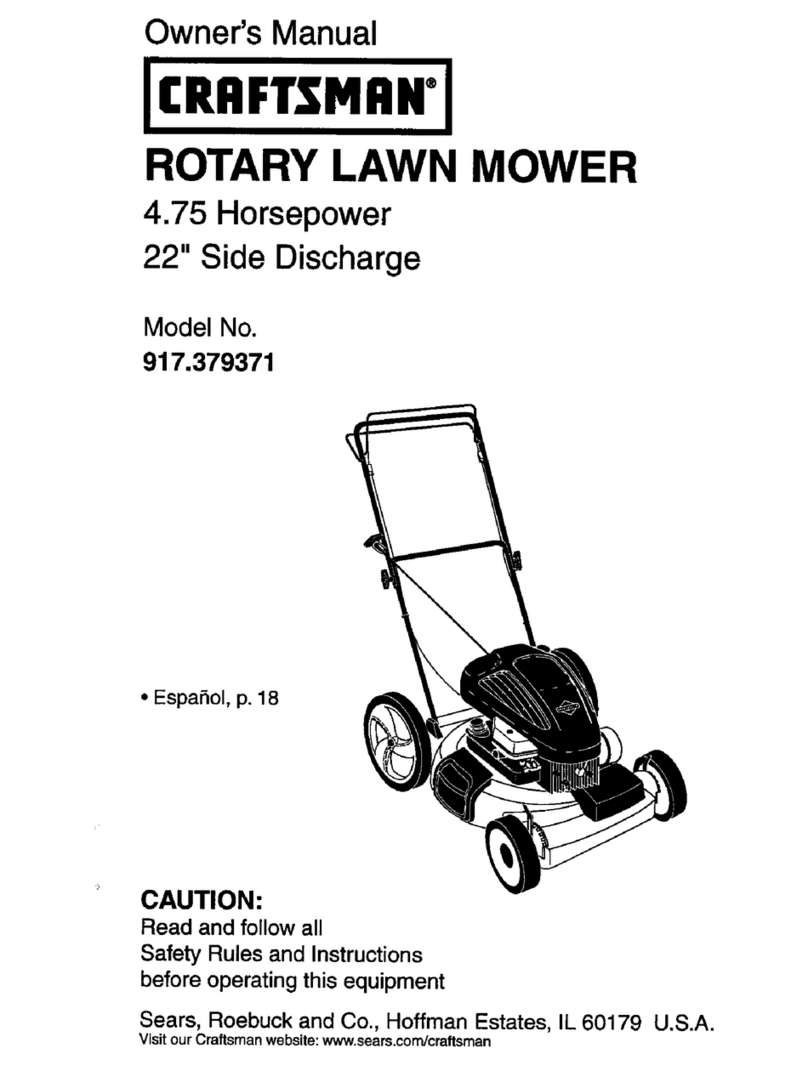SAFETY RULES
SAFE OPERATION PRACTICES FOR RIDE-ON MOWERS
IMPORTANT: THIS CUTTING MACHINE IS CAPABLE OF AMPUTATING HANDS AND FEET AND THROWING OBJECTS.
FAILURE TO OBSERVE THE FOLLOWING SAFETY INSTRUCTIONS COULD RESULT IN SERIOUS INJURY OR DEATH.
I. GENERAL OPERATION
Read, understand, and followall instructions in themanual
and on the machine before starting.
Only allow responsible adults, who are familiar with the
instructions, to operate the machine.
•Clear the area of objects such as rocks, toys, wire, etc.,
which could be picked up and thrown by the blade.
Be sure the area isclear of other people before mowing.
Stop machine if anyone enters the area.
• Never carry passengers.
• Do not mow in reverse unless absolutely necessary.
Always look down and behind before and while backing.
• Beaware ofthe mower discharge direction and do notpoint
itatanyone. Do notoperatethe mowerwithout eitherthe
entire grass catcher or the guard in place.
• Slow down before turning.
• Never leave a running machine unattended. Always turn
oft blades, set parking brake, stop engine, and remove
keys before dismounting.
• Turn off blades when not mowing.
Stop engine before removing grass catcheror unclogging
chute.
• Mow only in daylight or good artificial light.
• Do not operate the machine while under the influence of
alcohol ordrugs.
• Watch for traffic when operating near or crossing road-
ways.
Use extra care when loading or unloading themachine into
a trailer or truck.
• Data indicates that operators, age 60years and above, are
involvedin a large percentage of riding mower-related
injuries. These operators should evaluate their ability to
operate the riding mower safely enough to protect them-
selves and others from serious injury.
• Keep machine free of grass, leaves or other debds build-
up which can touch hot exhaust /engine partsand bum.
Do not allow the mower deck to plow leaves
or other debris which can cause build-up to occur. Clean
any oil or fuel spillage before operating or storing the
machine. Allow machine to cool before
storage.
II. SLOPE OPERATION
Slopes are a majorfactorrelated to loss-of-control and tipover
accidents,whichcan resultin severninjuryor death. All slopes
requireextracaution.Ifyoucannotbackuptheslopeorifyoufeel
uneasyon it,donotmow it.
DO:
•Mow up and downslopes, notacross.
•Remove obstacles such as rocks, tree limbs, etc.
•Watch for holes, ruts,or bumps. Uneven terrain could
overtum the machine. Tallgrass can hide obstac/es.
•Use slow speed. Choose a low gear so thatyou willnot
have tostop or shift whileon the slope.
•Followthe manufacturer's recommendations for wheel
weightsor counterweightstoimprove stability.
•Useextracare withgrasscatchers orotherattachments.
These can change the stabilityofthe machine.
• Keep all movement onthe slopes slowand gradual Do
not make sudden changes inspeed or direction.
2
•Avoid starting or stopping on a slope. Iftires lose traction,
disengage the blades and proceed slowly straight down
the slope.
DO NOT:
•Do not rum on slopes unless necessary, and then, turn
slowly and gradually downhill, ifpossible.
•Do not mow near drop-offs, ditches, or embankments.
The mower could suddenly turn overifa wheel isoverthe
edge of a cliff or ditch, or if an edge caves in.
•Do notmow on wet grass. Reduced traction could cause
sliding.
•Donottrytostabilizethemachinebyputtingyourfooton
theground.
Do not use grass catcher on steep slopes.
III. CHILDREN
Tragic accidents can occur if the operator is not alert to the
presence of children. Children are often attracted to the
machine and the mowing activity. Neverassumethatchildren
will remain where you last saw them,
Keep children out of the mowing area and under the
watchful care of another responsible adult.
Be alert and turn machine off ifchildren enter the area.
Beforeand when backing, look behindand downforsmall
children.
Never carry children. They may fall off and be seriously
injured or interfere with safe machine operation.
Never allow children to operate the machine.
• Use extra care when approaching blind corners, shrubs,
trees, or other objects that may obscure vision.
IV. SERVICE
•Useextracareinhandlinggaselineandotherfuels. They
are flammable and vapors are explosive.
-Useonlyanapproved container.
Never remove gas cap or add fuel with the engine
running. Allow engineto cool before refueling. Do not
smoke.
°Never refuelthe mechine indoors.
°Neverstorethemachineorfuelcontainerinsidewhere
there isan open flame, such as a water heater.
Never run amachine inside a closed area.
Keep nuts and bolts, especiallyblade attachment bolts,
tightand keep equipment ingood condition.
Never tamper with safety devices. Check their proper
operation regutady.
• Keepmechinefreeofgrass,leaves, orotherdebrisbuild-
up.Cleanoilor fuel spillage. AIIowmachinetocoolbefore
storing.
• Step and inspect the equipment if you strike an object.
Repair, if necessary, before restarting.
• Never make adjustments or repairs with the engine
running.
• Grass catcher components are subject to wear, damage,
and deterioration, which could expose moving parts or
allowobjects to bethrown. Frequently checkcomponents
and replace with manufacturer's recommended parts,
when necessary.
• Mower blades are sharp and can cut. Wraptheblade(s)
or wear gloves, and use extra caution when servicing
them.
Check brake operation frequently. Adjust and service
as required.




















